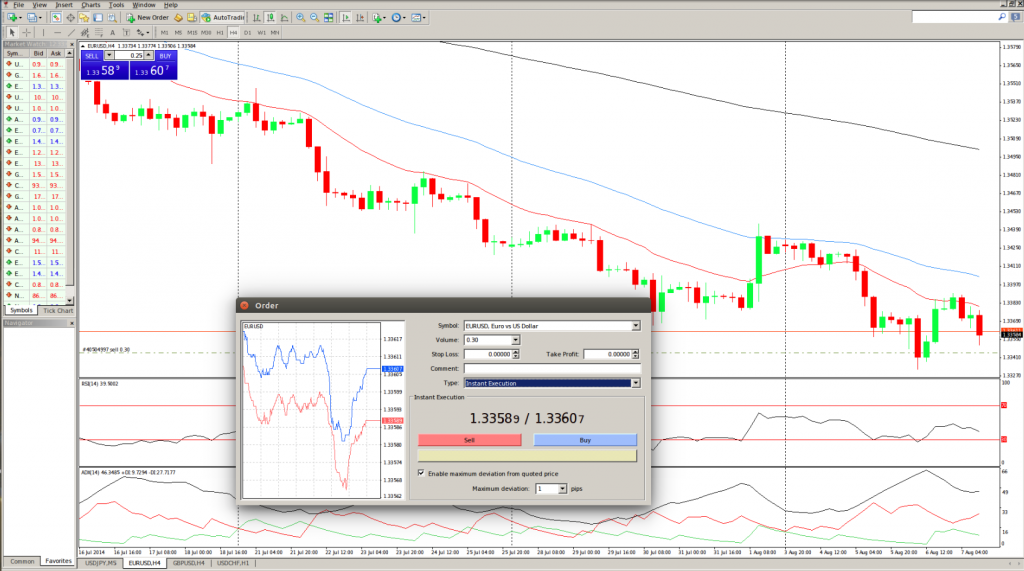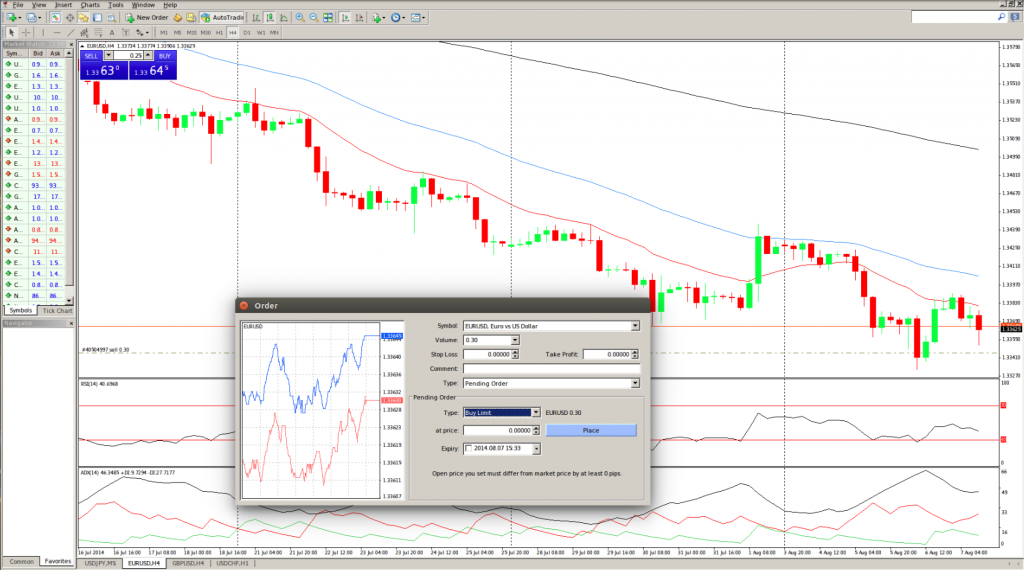MetaTrader 4 Trading – Types of Orders and Types of Execution
This lesson will cover the following
- Types of orders
- Ways, in which orders can be executed
Types of orders
The Client terminal allows one to prepare requests and send them to the broker for execution. The terminal also grants control over active positions. For these purposes, several types of trading orders can be used. An order is a clients commitment to the brokerage company to perform a trading operation. One can use the following orders in the terminal:
– Market Order – It represents ones commitment to the brokerage company to buy or sell a trading instrument at the current price. When executed, this order leads to the opening of a trading position. Instruments are bought at ASK price and sold at BID price. Stop Loss and Take Profit orders can be attached to a market order. Execution mode of market orders is dependent on the instrument traded.
– Pending Order – It is the clients commitment to the brokerage company to buy or sell a trading instrument at a pre-defined price in the future. This type of orders is used in order to open a trading position, when the future quotes reach the pre-defined price level. There are four types of pending orders available in the terminal:
1. Buy Limit – this is an order to buy, when the future “ASK” price equals the pre-defined price level. The current price level is higher than the value of the placed order. Orders of this type are usually placed, when one expects that the instruments price, having dropped to a certain level, will rise.
2. Buy Stop – this is an order to buy, when the future “ASK” price equals the pre-defined price level. The current price level is lower than the value of the placed order. Orders of this type are usually placed, when one expects that the instruments price, having reached a certain level, will continue to surge.
3. Sell Limit – this is an order to sell, when the future “BID” price equals the pre-defined price level. The current price level is lower than the value of the placed order. Orders of this type are usually placed, when one expects that the instruments price, having risen to a certain level, will drop.
4. Sell Stop – this is an order to sell, when the future “BID” price equals the pre-defined price level. The current price level is higher than the value of the placed order. Orders of this type are usually placed, when one expects that the instruments price, having reached a certain level, will continue to drop.
Stop Loss and Take Profit orders can be attached to a pending order. After a pending order has been triggered, the Stop Loss and Take Profit levels will be attached to the active position automatically.
5. Stop Loss – This order is used in order to minimize losses, if the price of the instrument has begun to move in the opposite direction. If the price reaches this level, the position will be closed automatically. Such orders are always connected to an open position or a pending order. The brokerage company can place them only together with a market or a pending order. The terminal checks long positions with BID price for meeting of this order provisions and it does the same with ASK price for short positions. In order to automate Stop Loss order, following the price, one can use a Trailing Stop.
6. Take Profit – This order is used to lock in profits, when the price of the instrument has reached a certain level. Execution of this order leads to the closing of the position. These orders are always connected to an open position or a pending order. The order can be requested only together with a market or a pending order. The terminal checks long positions with BID price for meeting of this order provisions and it does the same with ASK price for short positions.
One should note that execution prices for all trading operations are defined by the broker. Historical charts are drawn only for BID prices in the terminal.
Types of execution
Three order execution modes are available in the client terminal:
– Instant Execution – When using this mode, one will have his/her orders executed at the price, offered to the broker. Upon placing the order to be executed, the terminal sets the current prices in the order. If the broker accepts these prices, the order will be executed. If not, there will be a “Requote”, or the broker will return those prices, at which the order can be executed.
– Execution on Request – When using this mode, one will have his/her market order executed at the price, previously received from the broker. Prices for a certain market order are requested from the broker before the order is placed. After the prices have come in, order execution at the given price can be either confirmed or rejected.
– Execution by Market – When using this mode, the broker makes a decision about the price at which the order will be executed without any additional discussion with the trader. Placing an order in this mode is related with advance consent to its execution at this price.

